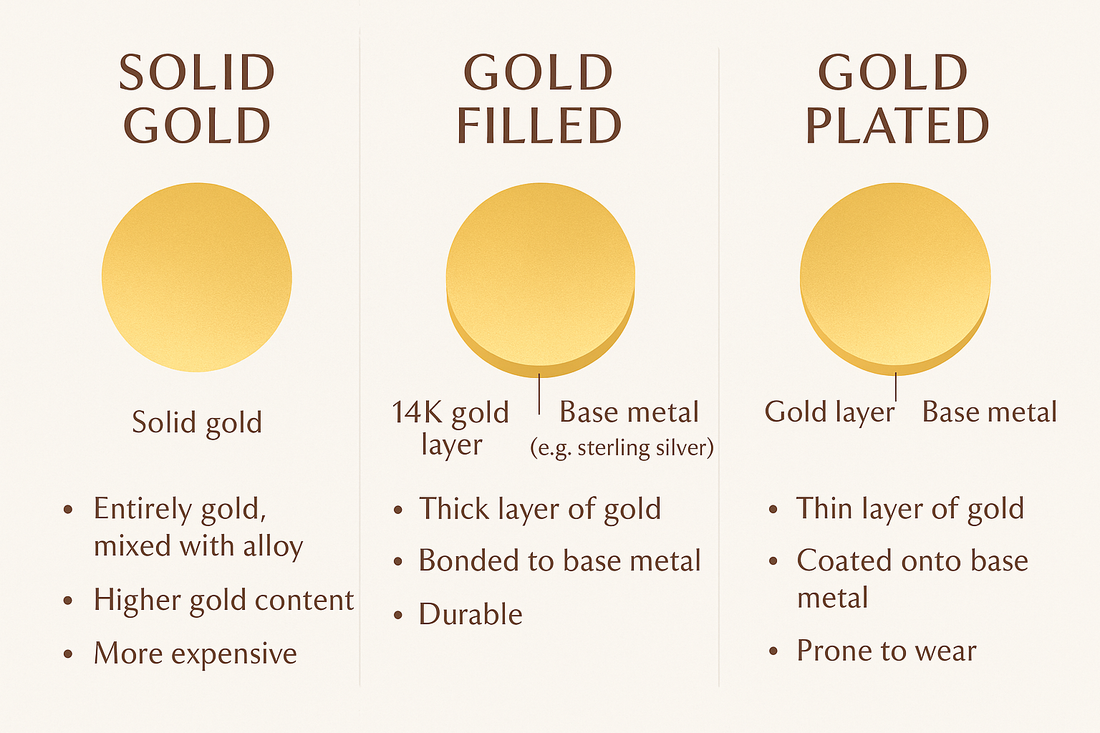
Understanding Gold: The Difference Between 10K, 14K, 18K & Gold Fill
The karat (K) system measures the purity of gold. Pure gold is 24K, but because it’s very soft, it’s often mixed with other metals (alloys) for strength and color.
-
24K = 100% pure gold
-
18K = 75% gold
-
14K = 58.3% gold
-
10K = 41.7% gold
The rest is made up of alloys like copper, silver, nickel, or zinc.
Choosing Between 10K, 14K, and 18K
10K Gold (41.7% gold)
-
Most durable and scratch-resistant
-
More affordable
-
Lighter yellow color
-
White gold in 10K has a slightly greyer tone due to higher alloy content
14K Gold (58.3% gold)
-
The most popular choice for engagement rings and everyday jewelry
-
Balanced strength, color, and price
-
Warmer yellow tone than 10K
-
White gold is less grey, but not as bright as 18K
18K Gold (75% gold)
-
Rich, luxurious golden color
-
Higher gold value
-
Softer and more prone to scratches
-
White gold looks brighter and creamier than lower karats
What About Gold Fill?
On my website, many of the gold pieces you see are 14K gold fill over sterling silver. This is different from solid karat gold, but it’s also very different from gold plating.
-
Gold Fill: A thick layer of solid 14K gold is mechanically bonded to a base metal. In my case, the base is sterling silver, which gives a brighter, higher-quality foundation than standard gold fill (which usually uses brass).
-
Durability: Gold fill has a much thicker gold layer than plating, so it won’t rub or wear off quickly. With care, it can last for many years.
-
Value: It looks and wears very much like solid gold, but is more affordable.
Quick Comparison
-
Solid Gold (10K, 14K, 18K): Gold through and through, mixed with alloys for strength. Higher gold content = richer color and higher cost.
-
Gold Fill (over sterling silver): Thick bonded layer of 14K gold on a silver core. Long-lasting, budget-friendly, and higher quality than gold plating.
-
Gold Plated: A very thin layer of gold applied to a base metal. Affordable, but tends to wear off faster.
Final Thoughts
Whether you choose solid gold or gold fill, both options give you beautiful, long-lasting jewelry — it just depends on what balance of price, durability, and luxury you’re looking for. My gold fill over sterling silver pieces are a wonderful way to enjoy the beauty of gold at a friendlier price point, while my solid gold designs offer heirloom-quality luxury for a lifetime.
